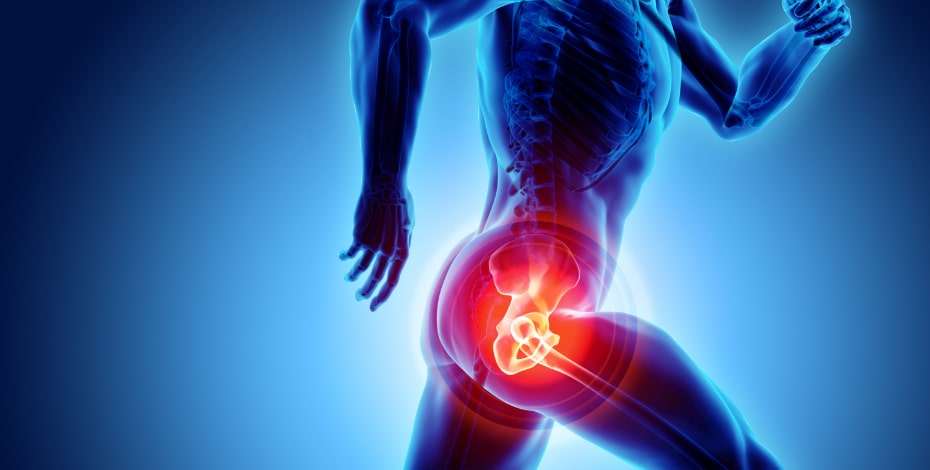
Researching the running mechanics in people with hip-related pain

Mark Scholes had many questions about the best treatment strategy for tackling the high prevalence and burden of hip and groin pain in elite junior footballers he saw in the clinic.
Mark Scholes, APAM, developed an interest in sports physiotherapy at 15 while volunteering with the medical team at a local U18 AFL development program. Years later this his led him to be awarded a PRF grant for his PhD research. Mark says it was the rapid on-field work by the medical team that first attracted him to physiotherapy.
‘I was excited by the challenge of fast-paced problem solving, and the sense of responsibility associated with being a trusted primary contact practitioner. On reflection, at that time I probably did not appreciate the vast reach of physiotherapy across the many disciplines, nor the challenges and skills needed to work with a patient throughout a prolonged rehab program.
'Regardless, the excitement of acute care had me hooked—but a desire to continue asking clinical questions has made for an interesting journey as a physiotherapist so far’.
After graduating from La Trobe University with a Bachelor of Physiotherapy in 2007, Mark combined private practice clinical work with sports physiotherapy—primarily working with elite junior football players (AFL). After three years of clinical work, he says he had ‘many questions and I wanted more from the physiotherapy profession.’
He enrolled in the La Trobe University Master of Sports Physiotherapy program, earning a graduate certificate in 2012 and then his masters in 2015.
Undertaking his PhD, Mark’s research is investigating hip-related pain in young and middle-aged active adults.
‘Observing a cohort of almost 250 competitive sub-elite football (AFL and soccer) players, my research is focused on understanding movement patterns during high-impact sport tasks in people with hip-related pain, and exploring the relationship between movement patterns and pain over time’.
Mark says he is focusing on this research because his clinical experience with elite junior football players highlighted the high prevalence and burden of hip and groin pain in these athletes.
‘Longstanding pain in this region had the potential to disrupt performance and lead to long periods without playing or training. We also know little about the long-term effects of persistent hip and groin pain and continued sport participation on hip joint structure.
‘I had many questions about the best treatment strategy for these patients in the clinic, but the research base provided little high-quality evidence to guide our day-to-day management. As clinicians, we needed a better understanding of this complex anatomical region, including the interplay between pain and symptoms, structure, and movement patterns.
'So, armed with questions, I met with APA Sports and Exercise Physiotherapist Dr Joanne Kemp—a leading researcher in hip-related pain. We discussed opportunities for research at the La Trobe Sport and Exercise Medicine Research Centre (LASEM).
‘With a team of researchers, I work on a project called femoroacetabular impingement and early osteoarthritis cohort (FORCE). This is a longitudinal cohort of football players we are following over a period of two years, and hopefully beyond, investigating factors that predict the worsening of hip joint structure over time.
Working on a large, longitudinal project like this, I have collected a lot of data; contributing to the baseline physical and biomechanics testing in the gait laboratory at La Trobe University—and coordinating the six, 12 and 24-month follow up assessments.
‘At LASEM, there are always opportunities to extend your research experience and work on projects outside of your PhD project; so I am also involved in a joint project between LASEM and the AFL investigating hip and groin pain in new draftees.’
Mark was awarded a $9982 Seeding Grant by the PRF last year, which he says has provided the necessary resources to ensure this project is completed. ‘Many clinically important research projects are held back by a lack of time and resources for researchers; this is particularly common in biomechanics research where data processing times are long,’ Mark says.
‘Unfortunately, the recent financial impact of COVID-19 on higher education may exacerbate this problem. Thankfully, this PRF grant has given us the opportunity to undertake this project and provide meaningful information for physiotherapists in the clinic, improving clinical decision-making and treatment outcomes for patients.
The opportunity to improve outcomes for our patients is central to my research philosophy, and that of the PRF and LASEM.’
Through the La Trobe University masters program community, Mark responded to an advertisement looking for a physiotherapist at Complete Sports Care (a private practice clinic in Melbourne). This opportunity shifted the focus of his physiotherapy career to combining clinical and research work.
‘It was hard not to be inspired and excited about clinical research when working with the passionate clinician– researchers that I do,’ Mark says. ‘This is the first study to investigate running mechanics in people with hip-related pain; therefore, these seminal findings will provide the first clinically useful evidence for physiotherapists and will inform future research projects in this area.’
Mark Scholes is an APA Sports and Exercise Physiotherapist, committee member of the Sports and Exercise Physiotherapy group (VIC Branch), and PhD candidate at the La Trobe Sport and Exercise Medicine Research Centre. Mark’s research is investigating hip and groin pain in sub-elite football players.
© Copyright 2025 by Australian Physiotherapy Association. All rights reserved.





